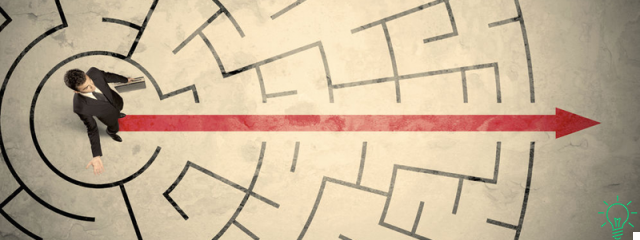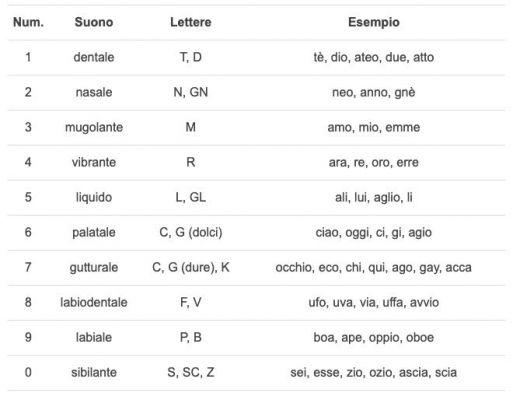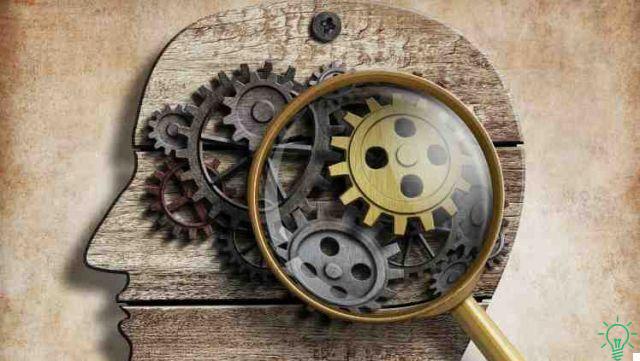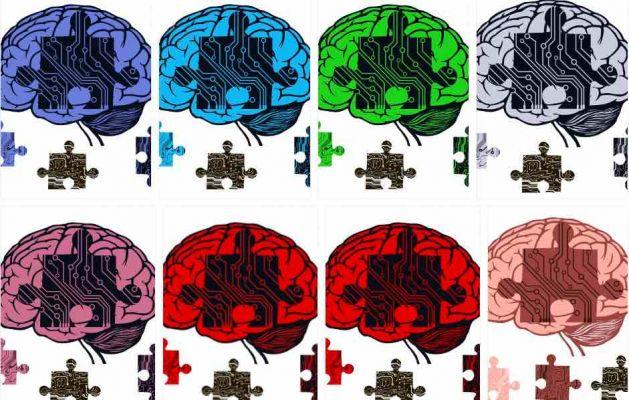
At least half of my readers write to me because they are interested in learn memorization techniques.
And these are not, as you might think, exclusively university students who want to learn memory techniques to study less.
They also write to me freelancers who need it for work, graduates who have to prepare competitions, retirees who go back to the books and a lot of people who, simply, they want to remember more and better.
Regardless of the reasons you want to learn them, in this article I'll explain:
- Le two skills which are the basis of all memory techniques, even the most complex
- Le 3 memorization techniques which is worth learning
- The big mistake that you have to avoid when you decide to use them
- The right way of iniziare to use them
1. The basics of memory techniques: visualizing and associating
Storage techniques can be applied to data and information of all kinds, and in ways that make them different from each other.
The end result however, what it allows you to remember, it will always be the same: a series of images associated with each other.
It is therefore these two skills, visualizing and associating, the ones that must be understood but above all practiced with constancy.
display
In a famous memory experiment conducted in 2008 at Duke University, a group of randomly chosen students were shown 2500 images over a span of 5 and a half hours.
About 8 images per minute!
Subsequently, each image was re-presented to the same subjects, but paired with another only slightly different.
They had to identify, between the two, the one that had been shown to them previously.
On average, the students taking the test they were able to recognize the correct images with an accuracy of approximately 90%.
This is an incredible figure, isn't it?
Especially if you think about the fact that, on the other hand, we happen to not remember things that we have heard or read dozens of times.
How many planets are there in the solar system? When did Napoleon die? What is a mitochondrion?
They are information that you have probably met dozens of times but I bet you still don't remember them.
And it is absolutely normal that this is the case.
In fact, for hundreds of thousands of years our species has not known either language (if not very rudimentary) or writing.
And therefore we are absolutely not good at remembering words.
But when we turn these words into a series of effective images, here is that remembering them becomes extraordinarily easy.
Especially when they represent concrete, known objects with easily visualized characteristics.
For this reason, a classic exercise that is done in memory courses is to make you learn the shopping list, presenting you with about twenty images such as coffee, bread, tomato, etc, and guiding you in their memorization in a couple of minutes.
The success rate is very high, as is the enthusiasm that follows.
However, this is an illusion, because when you try to memorize more complex and abstract data, things get very complicated, especially at the beginning.
We will then see how you can overcome this problem.
In the meantime, remember that if you want to use memory techniques, you have to learn to transform everything that comes your way into images.
And you have to make sure that these images are:
- Vivid
- Known
- With strange or absurd elements
- Whenever possible, in motion, perhaps by acting on the next image
To get started quickly, here is a complete tutorial on the art of transforming into images.
Associate
Let's now move on to the second pillar of memory techniques: the association.
You see, of groups of isolated images and detached from any context, in the end you do very little.
You must be able to associate them with each other in such a way as to build data structures articulate and make sense.
Sometimes the images of the concepts you need to remember are associated with each other consecutively, as in a chain.
Other times, each image is associated with a physical path present in your long-term memory, as it happens in a palace of memory (we will see it shortly).

Still other times, a single image is divided into more details and on each detail you go to insert information (it is a technique called segmentation).
Regardless of the way in which two images are associated, the method is always the same: you make them interact physically (above, or below, or inside, or to the side, etc.) in such a way that, when you visualize one, then the other also appears. .
Learn the basics, let's see the real memory techniques.
2. The technique of the mental palace
Not only is it the most effective memorization technique, but also the oldest, having been handed down to us by Cicero, who used it to remember his speeches.
First of all, transform concepts into images which you must remember, as we have seen before.
Then, you associate them with a path of places you already know (e.g. the rooms in your home, the way from home to the office, etc.) to create a bridge between long-term and short-term memories, strengthening the latter.
Then when you have to remember the information, mentally go to your mental path and in each place (hence the term "loci technique”) You find associated with the image you need to remember.
Running a memory palace for small lists is very simple.
But using it to really improve your memory is difficult.
In fact, you must learn to solve a series of non-trivial problems:
- Which concepts should be visualized and which should not?
- How do I build memory palaces large enough? To study private law, the 3 rooms in my house are not enough!
- Can I reuse the same building for multiple memorizations?
I then created 2 of articles that will help you answer these questions:
- My free guide to the palace of memory
- A complete memorization exercise with the loci technique
3. Keyword memory technique, or keyword method
You know when you happen to have something on the tip of your tongue and don't remember it, and then all it takes is a little clue to trigger your memory?
Here, the keyword method, or keyword method, works just like this: it makes you systematically build clues, in the form of images, that trigger memorization and recollection.
With the keyword method you happen to create really strange images and associations:
- An army of Vandals breaking through the wall of your room to memorize which wall in German is called Wand ...
- Fish with a big head swimming in a milk carton, as a reminder that Cephalosporins are Beta-Lactam antibiotics ...
- Glue on the elbow to memorize the collateral ligament of the ulna ...
Don't be afraid if these little examples seem absurd to you.
The kewyord method gives its best:
- When you find images alone, in your cultural baggage: then yes they tell you something and are indelible!
- When you use them within a study context you already know a little
The keyword method is so powerful that it allows you to learn 100 foreign words in an hour, or even study anatomy, biochemistry, law, and any other highly mnemonic subject with absolutely unparalleled efficiency.
You can learn more about it in this article.
4. Memorize the numbers: the Phonetic Conversion
Memorizing numbers poses even more problems than memorizing words, because numbers are even more abstract than words.
The phonetic conversion technique solves the problem because it allows you to transform numbers into words according to a very simple code that is always the same.
It matches any number from 0 to 9 a consonant sound, in such a way as to be able to convert any sequence of numbers into words (and therefore images) of complete meaning, by adding vowels.
The number-consonant coding scheme is as follows:

Any number can then be converted into a sequence of consonants, and this sequence of consonants into a series of images which you then associate with each other.
It is therefore a question, again, of returning to the two basic skills we have already talked about: visualizing and associating.
And so for example a long number like:
348201377515
Become the consonant sequence:
M R V N S T M C(h) C(h) L T L
Which you can remember by viewing and associating the 4 words with each other:
MaRe, ViNo, SToMaCo, ColTeLlo
Phonetic conversion, when used casually, allows you to memorize very quickly:
- Date
- Article numbers of the legal codes
- Alphanumeric passwords
- Phone numbers
- Anything else that has a built-in number
Click here to read the article dedicated to phonetic conversion.
5. Memorization techniques: Knowledge Vs Skills
The biggest mistake you can make when learning memorization techniques is think you can use them immediately to memorize articulated and complex data, such as those of a university exam.
It would be like pretending to play an instrument with ease after they have explained the musical notes and what a staff is!
Absurd not?
And yet this kind of misunderstanding occurs on memory techniques.
And so you find yourself people who, after learning them by reading a blog article and trying them for 5 minutes a couple of times, give up because they can't make them work.
Or others who, after getting excited and paying a thousand euros for a memory course to learn the shopping list, waste weeks trying to apply them unsuccessfully in books.
The reasons why many fail to use memory techniques in a complex way are always the same:
- They have not learned how to produce effective images for articulate or abstract concepts
- They cannot choose which words to display and which not
- They cannot build sufficiently large mental palaces
They are convinced at that point:
- Or that memorization techniques don't work
- Or that maybe they work, but not for them
But they are wrong again.
It is as if, learning the 7 musical notes, they try to play a piece and, since they cannot, they think that music does not exist, or that if it exists it is not for them.
So if you really want to use memorization techniques, you must first get rid of false expectations.
Le memory techniques cannot be simply “learned”, because they are not a knowledge, but a skill.
Or, in other words, to be effective it is not enough to know them, you have to train them for a long time.
6. How to train memorization techniques
Have you ever seen one workout table to running for beginners?
They make you start with the extremely simple, like walking a few minutes a day
After a short time, you switch between running and walking
Then proceed through progressively more difficult intermediate states, increasing the minutes of running and decreasing those of walking
You arrive at what seemed impossible before, that is to run for a consecutive hour, literally whiz to the side of yourself from 3-4 months ago.
This is a valid scheme whenever you need to develop some skill.
We start from the simple and proceed progressively towards the complex, trying to oppose the enemy who risks making you give up: impatience to have immediate results.
Do you really want to know how to learn memory techniques?
- Read this article and the articles linked to it.
- Start memorizing small lists of data through the visualization and association processes
- Build your first little mental mansions of 20 or 25 rooms
- Try memorizing for simple snippets of text made up of fairly concrete concepts
- Progressively increases the complexity and breadth of memorization, trying to understand and solve the problems that arise.
After a relatively short time you will see that you will find yourself knowing how to memorize that seemed impossible to you just a few weeks or months earlier.
Things that many of my students and blog readers do with great ease, such as memorizing:
- Thirty historical dates in less than an hour
- Insertions, function and innervation of all the muscles of the arm in a couple of hours
- Number and content of dozens of articles of the civil code in a few days
- Ordering a 52-card deck in a couple of minutes
And they do it not because they have learned memorization techniques, which only takes a few hours for.
But because they have developed the dexterity in using them. A greeting. Anthony.


























